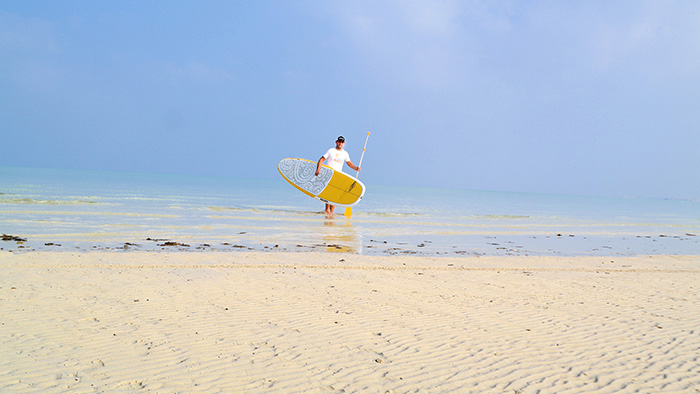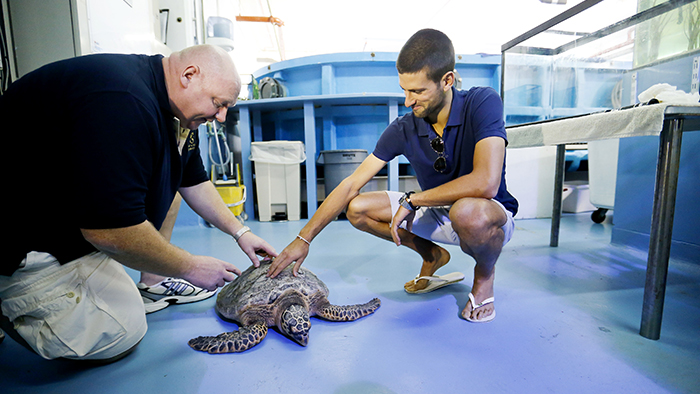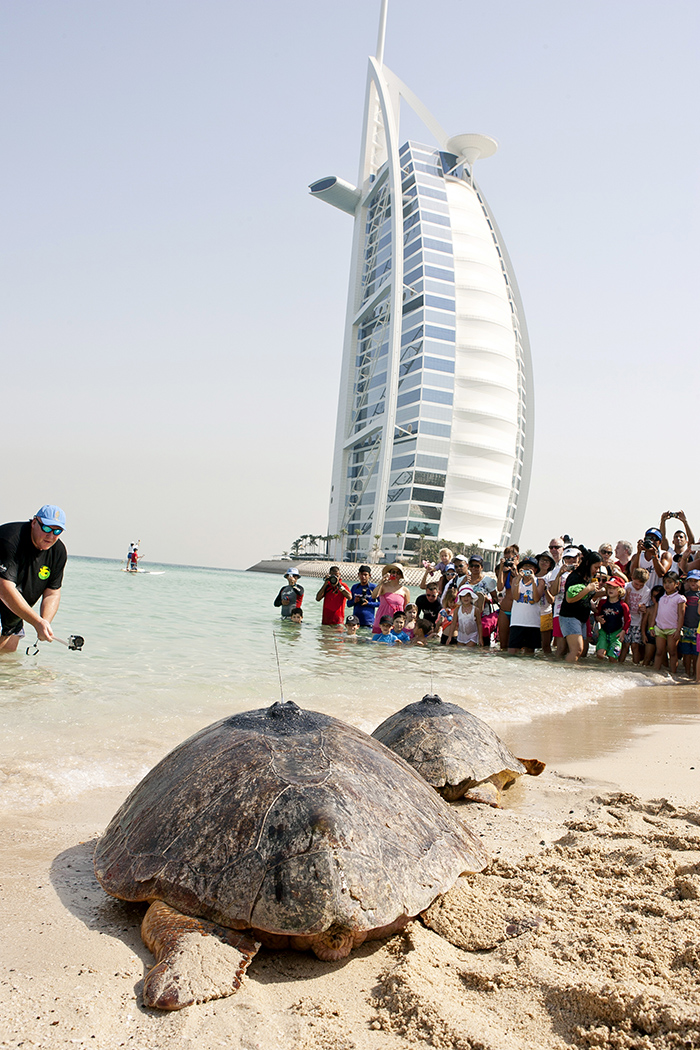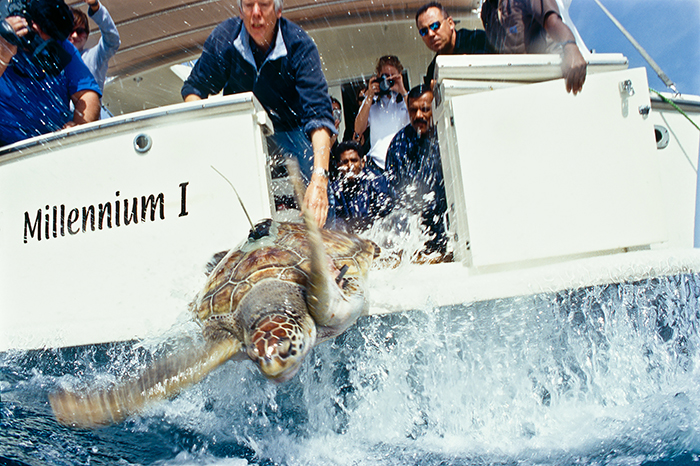It was the long Eid weekend, and we made the plan to explore the beaches in the western region of Abu Dhabi in the quest to find a nice camping spot. Despite the long coastline of the country, it is very hard to find any camping spots on the beach especially ones where you have the beach for yourself.
After a long drive and a few attempts to get to the beach, we finally found a nice spot after Jebel Danat with long beaches and a view of the open sea. The only bad thing was the rubbish and subsequent dirt, which is found on almost all beaches in this area. Luckily the water was clean and crystal clear, so we enjoyed the water during the day to cool down, even though the sea was extremely shallow.
After an afternoon paddle, we were walking back in the shallow water when we saw a little sea turtle looking up at us. The turtle didn’t make any attempts at escape as we moved closer. When we reached the turtle, we could see that she was weak and in distress, and so we picked her up for an inspection. The poor little thing was covered in barnacles and looked very thin. With the best of intentions, I carried the turtle to our camp in an attempt to help her but, I didn’t know much about sea turtles and what I should do. One thing was very clear though and that was that she needed help.

A few years ago I found a turtle in the same condition and trying to help her, we removed the barnacles and placed her back in the sea. We originally had the same plan for this small turtle which we affectionately named “Maya”. Within our group was Ally Landes from the Emirates Diving Association, who knew a little bit more about sea turtles than we did. Ally identified Maya as a juvenile hawksbill sea turtle, which is listed as Critically Endangered by the International Union for Conservation of Nature. The hawksbill has recently seen a huge decline in numbers due to various human activities, and they are now at severe risk of extinction in the wild. Ally advised that the barnacles should not be forcibly removed, as this can cause pain and damage to the fragile sea turtle.

Ally then called David Robinson from the Burj Al Arab Aquarium Team and Dubai Turtle Rehabilitation Project (DTRP) to get some expert advice. Based at Burj Al Arab Jumeirah and Madinat Jumeirah, the DTRP is run in collaboration with Dubai’s Wildlife Protection Office, with essential veterinary support provided by the Dubai Falcon Hospital and the Central Veterinary Research Laboratory. The day-to-day running of the project and the animal husbandry is managed by Burj Al Arab’s dedicated aquarium team. The DTRP is the only dedicated sea turtle rehabilitation facility in the UAE and rehabilitates hundreds of sick and injured sea turtles every year.

David explained that the barnacles, although they look bad, were not the actual problem. Sea turtles are reptiles and as such are cold blooded which means they gain their body heat from their environment, in this case, the surrounding seawater. Every winter, as the regional seawater temperatures start to drop, sea turtles (especially juvenile hawksbills), struggle with the colder water and some become lethargic and sick, and can wash up on the beaches, just like “Maya”. Barnacles are natural parasites on sea turtles, and a healthy sea turtle can control it’s barnacle load by scratching them off on rocks and corals. If a turtle is found with excessive barnacle growth, this is an indication that something is very wrong with the animal itself and that this turtle has been sick for some time. Removing the barnacles from the animal causes damage to the carapace and internal bleeding.
With this new knowledge, I feel sorry for what I had done to that poor turtle I found a few years ago. I think it is good to help if you can, and that it is okay to try to help, even if you make a mistake but, if there are experts to help, you should call them and know who they are.

Everyone knows how to call an ambulance in an emergency and so, if you spend a lot of time on the sea or the beach, you should know about the Dubai Turtle Rehabilitation Project and save their number (+971 4 301 7198). This way, if you are in the situation similar to us, you will know the right thing to do for the animal.
Maya is currently doing well under the care of the DTRP team, she is putting on weight and has been treated for several severe ailments. Later in the year when the sea temperatures warm a little, she will be released back into the Gulf and enjoy a second chance, thanks to everyone involved.
If you find a sick or injured sea turtle on the beach, please do not attempt to remove any barnacles (again, the barnacles are a symptom that something else is wrong) and call the DTRP on 043017198 or email at baaaquarium@jumeirah.com for further information about the DTRP visit www.facebook.com/turtle.rehabilitation.
Words + Photos By: Daniel Birkhofer

